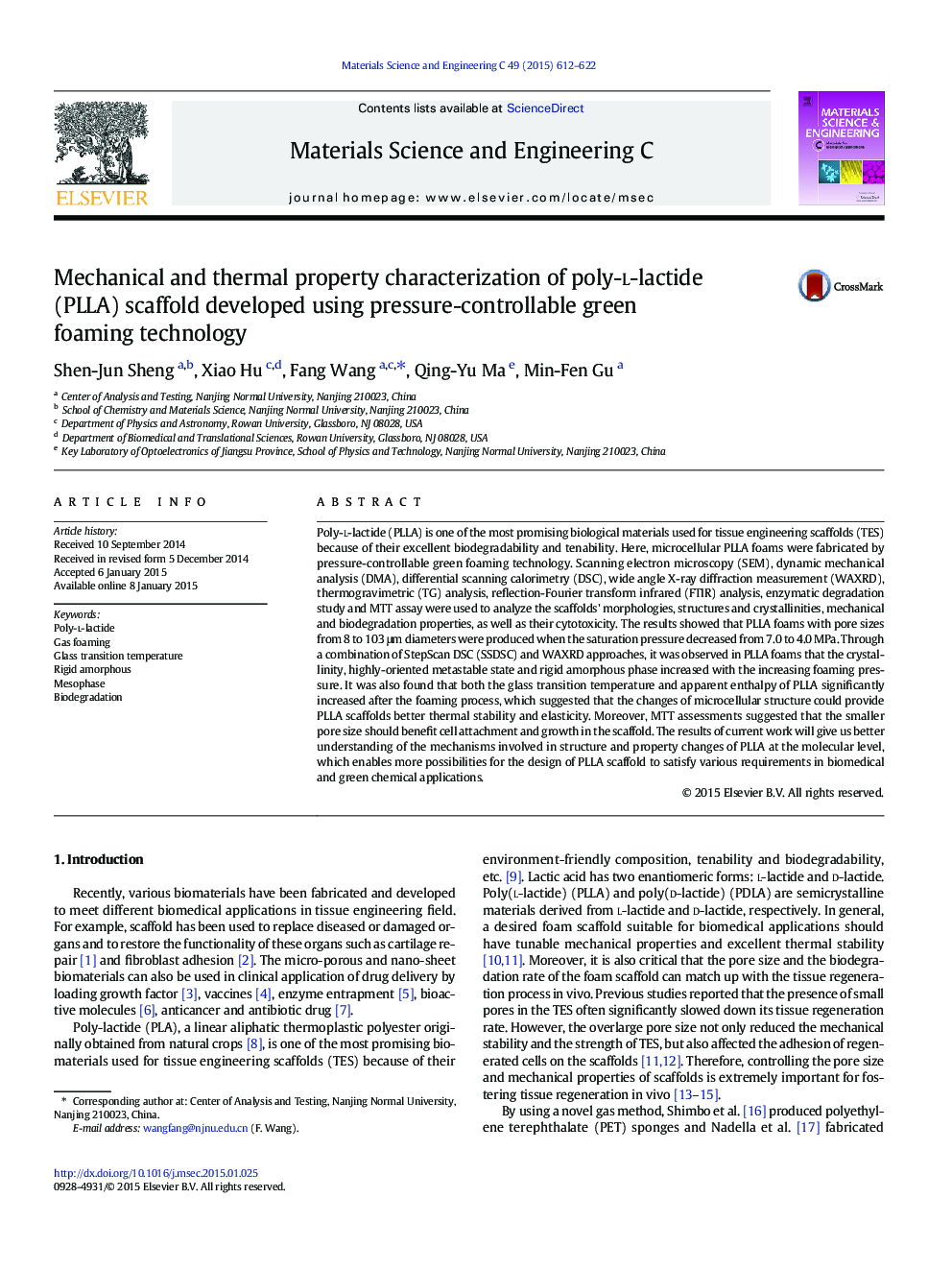| کد مقاله | کد نشریه | سال انتشار | مقاله انگلیسی | نسخه تمام متن |
|---|---|---|---|---|
| 1428218 | 1509172 | 2015 | 11 صفحه PDF | دانلود رایگان |

• Pressure-controllable green foaming technology is used.
• The crystallinity and rigid amorphous fraction is calculated by using DSC and XRD.
• We examine the changes of structure and property under different foaming pressures.
• The mechanism of PLLA with different pore sizes at the molecular level is shown.
Poly-l-lactide (PLLA) is one of the most promising biological materials used for tissue engineering scaffolds (TES) because of their excellent biodegradability and tenability. Here, microcellular PLLA foams were fabricated by pressure-controllable green foaming technology. Scanning electron microscopy (SEM), dynamic mechanical analysis (DMA), differential scanning calorimetry (DSC), wide angle X-ray diffraction measurement (WAXRD), thermogravimetric (TG) analysis, reflection-Fourier transform infrared (FTIR) analysis, enzymatic degradation study and MTT assay were used to analyze the scaffolds' morphologies, structures and crystallinities, mechanical and biodegradation properties, as well as their cytotoxicity. The results showed that PLLA foams with pore sizes from 8 to 103 μm diameters were produced when the saturation pressure decreased from 7.0 to 4.0 MPa. Through a combination of StepScan DSC (SSDSC) and WAXRD approaches, it was observed in PLLA foams that the crystallinity, highly-oriented metastable state and rigid amorphous phase increased with the increasing foaming pressure. It was also found that both the glass transition temperature and apparent enthalpy of PLLA significantly increased after the foaming process, which suggested that the changes of microcellular structure could provide PLLA scaffolds better thermal stability and elasticity. Moreover, MTT assessments suggested that the smaller pore size should benefit cell attachment and growth in the scaffold. The results of current work will give us better understanding of the mechanisms involved in structure and property changes of PLLA at the molecular level, which enables more possibilities for the design of PLLA scaffold to satisfy various requirements in biomedical and green chemical applications.
Figure optionsDownload as PowerPoint slide
Journal: Materials Science and Engineering: C - Volume 49, 1 April 2015, Pages 612–622